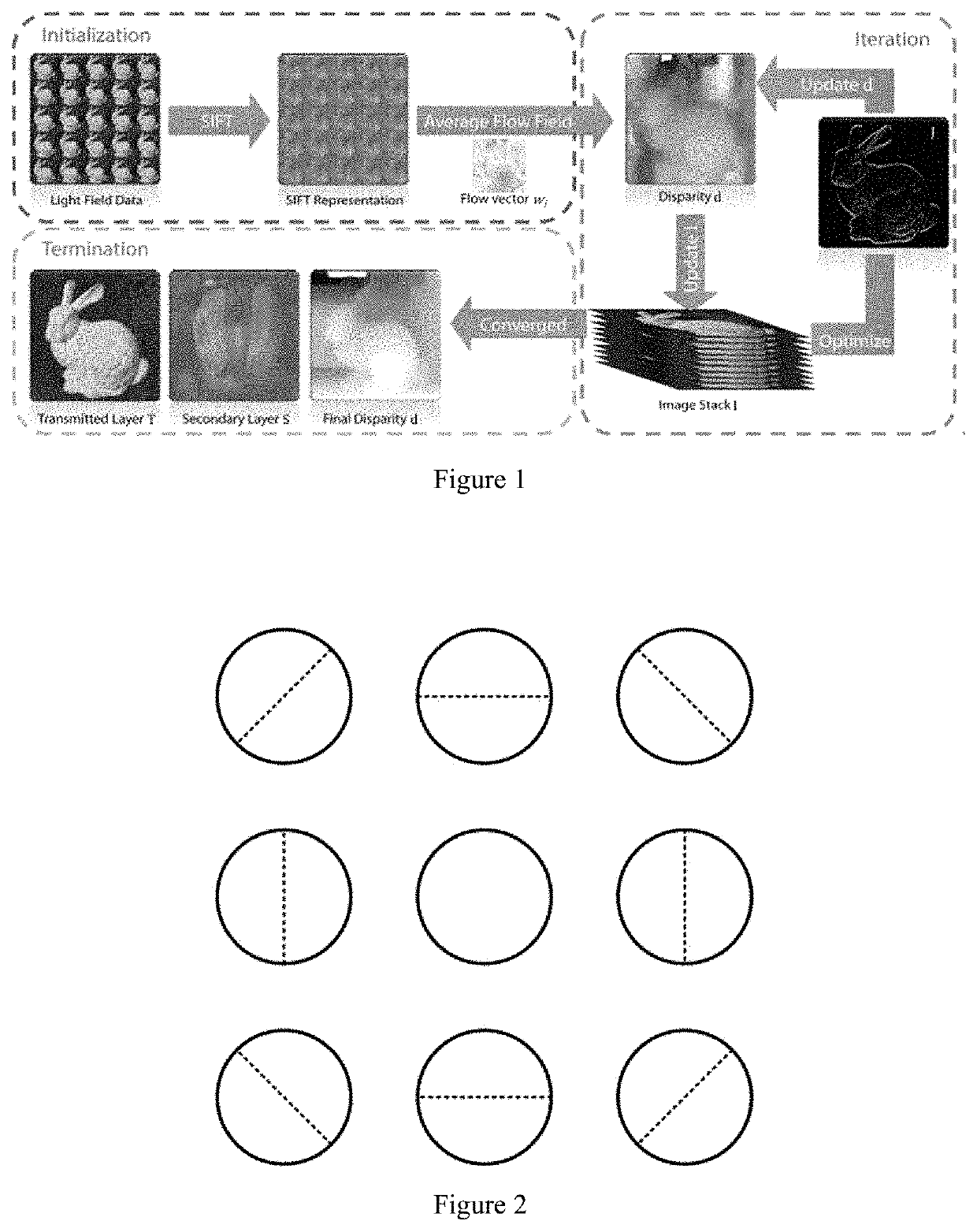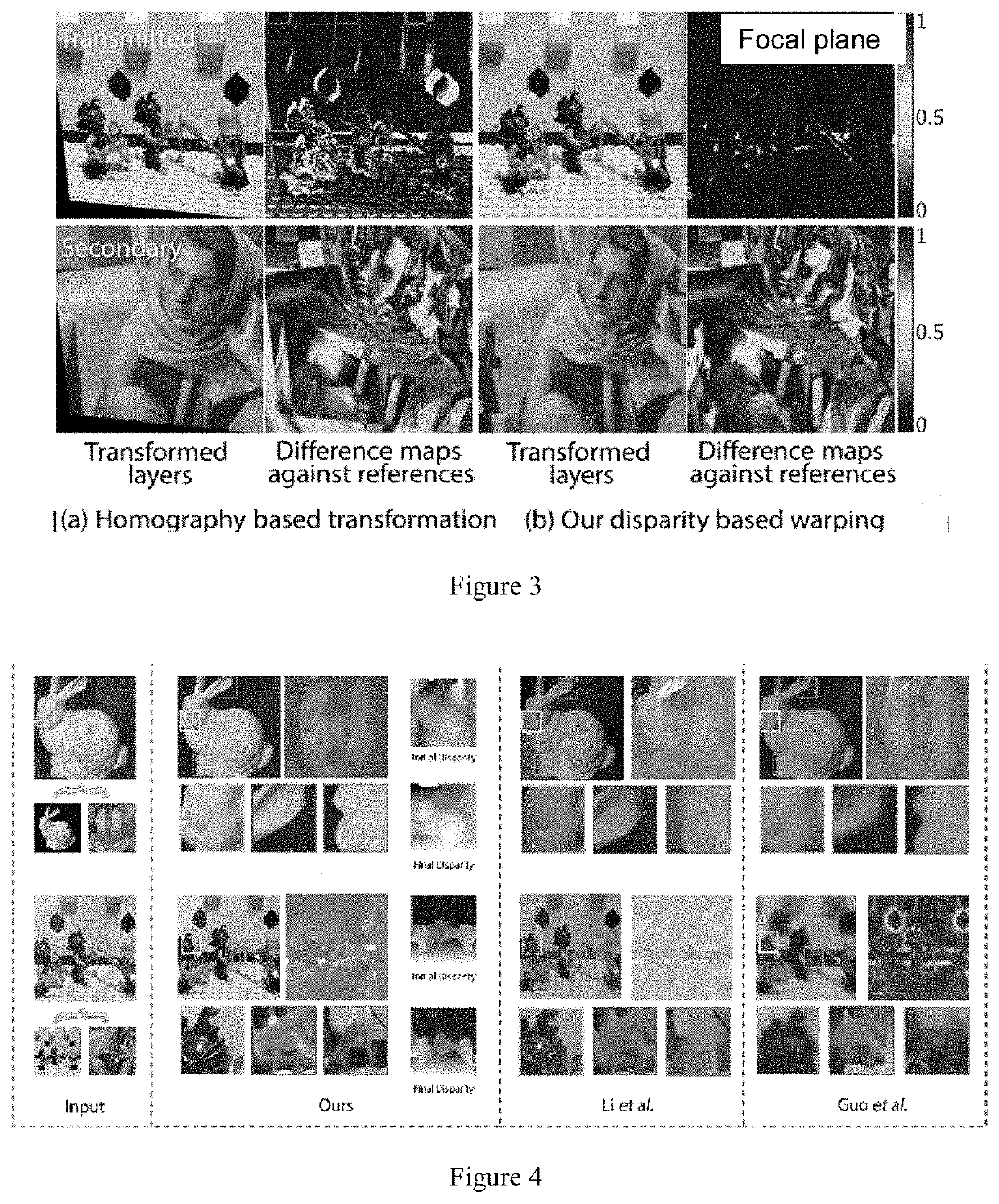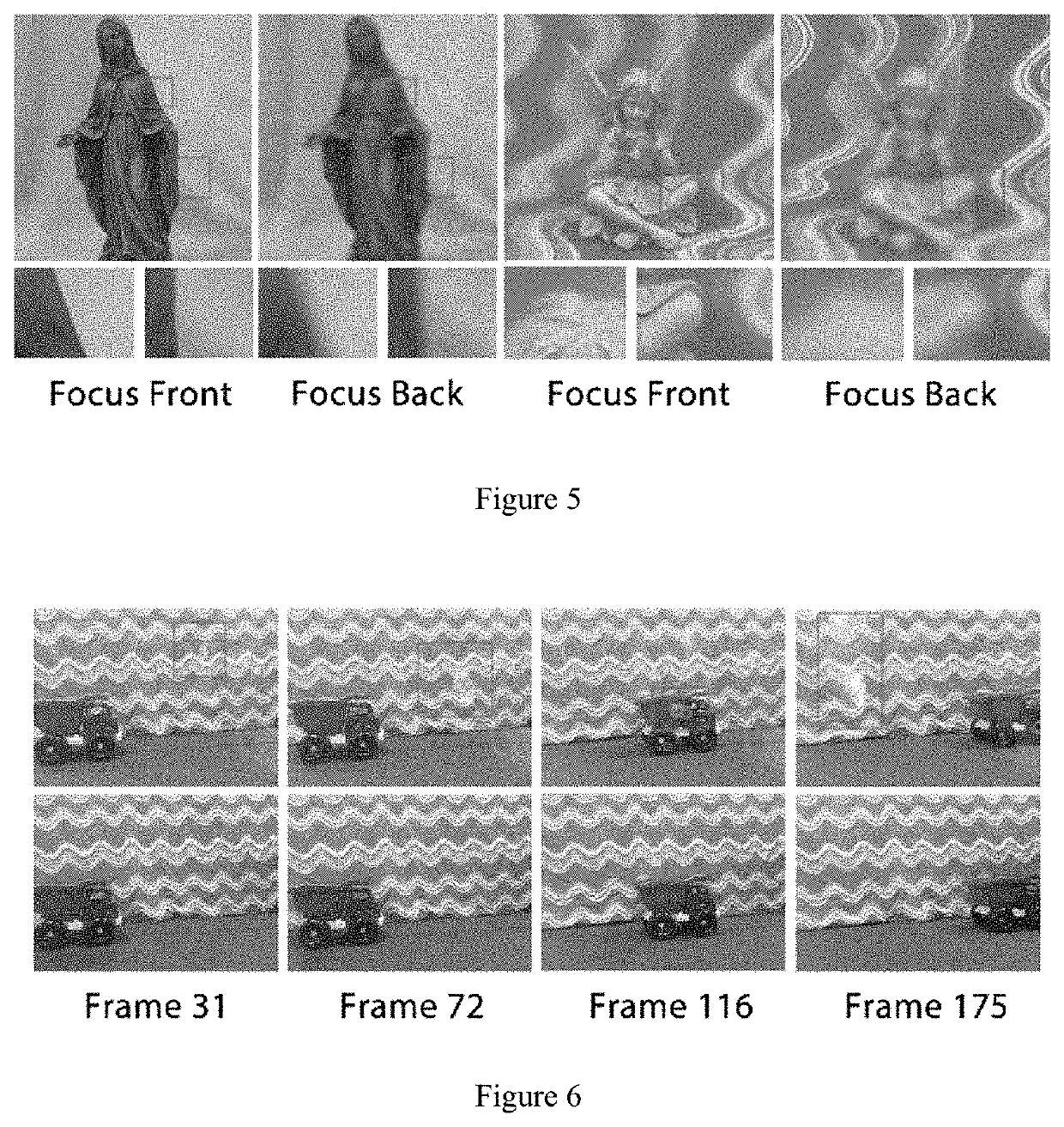Light field based reflection removal
a light field and reflection technology, applied in the field of image processing, can solve the problem that traditional methods using unstructured collection of viewpoints are almost impossible to achiev
- Summary
- Abstract
- Description
- Claims
- Application Information
AI Technical Summary
Benefits of technology
Problems solved by technology
Method used
Image
Examples
Embodiment Construction
[0023]In accordance with embodiment of the present invention, a method of processing light field images for separating a transmitted layer from a reflection layer is provided.
[0024]In accordance with embodiments of the present invention, the light field of the scene (transmitted layer) with a secondary layer (e.g., reflection) is captured. The inputs are light field images from different viewpoints, and the central view is used as the reference view.
[0025]For each camera in the light field, polarizers are applied to the cameras with different polarization angles. Most of light in the real life is unpolarized, and upon being reflected by an interface, the light will have different polarization than that of the transmitted light. Different part of the reflection can be captured, which are useful to separate the transmitted layer.
[0026]One approach to separate the layers for the reference view is by exploring redundant information that is available from the other views. To account for ...
PUM
 Login to View More
Login to View More Abstract
Description
Claims
Application Information
 Login to View More
Login to View More - R&D
- Intellectual Property
- Life Sciences
- Materials
- Tech Scout
- Unparalleled Data Quality
- Higher Quality Content
- 60% Fewer Hallucinations
Browse by: Latest US Patents, China's latest patents, Technical Efficacy Thesaurus, Application Domain, Technology Topic, Popular Technical Reports.
© 2025 PatSnap. All rights reserved.Legal|Privacy policy|Modern Slavery Act Transparency Statement|Sitemap|About US| Contact US: help@patsnap.com



